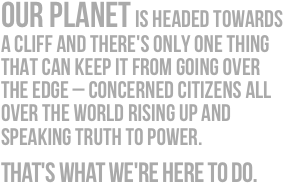By Lurette Paulime
In Cancun the COP16 is taking place to discuss the problem of climate change. Yvo de Boer, (Special Global advisor, climate change and sustainability) said that at the COP15, a politician had been used the children’s history to remind what they were actually negotiating about. He said: “we think that children are incredible important. Environmental education for children is really important in the context of the environmental conservation process”. In the side event of future responsibility, children from different countries had the opportunity to express their opinions and ideas about climate change. Youth from Guatemala, Mexico, Indonesia, San Salvador and Haiti are wondering if in the future, there will be water scarcity and extinction of animals in those countries. Another from Belize mentioned that Belize was a nice country, but it has been devastated by sea level rise and floods. He said that we must be prepared to educate child at school and communities to afford this challenging issue. ‘Please do something beneficial to us; if you take care of the environment, you also take care of us.”
Coralie Norris from Haiti said that the country is facing climate change every day. Deforestation and pollution are the most critical in the country. “It is too much”. She mentioned that a few years ago, she went to camp in the forest with her father, but now there is no forest to do that anymore. “We want a new future; we need to start now taking actions”. I also believe that children are part of the solution. The UNICEF member mentioned that children have to be close to the negotiation process and remind politicians what they want. For example Ms. Emilia said that children in Indonesia are really involved in climate funding and recycling to combat climate change. She stated “we believe that it is very good to hear children’s voices and to support their network. Children play an important role of the solution of climate change because they have a profound understanding about the environment”. I also believe that youth’s participation should be used in decision making.
UNICEF and other organizations are currently working in many countries of the world to support children economically, socially and intellectually. They recognize that climate change is an urgent issue and that children can be part of the solution. Politicians and civil society have to be aware that if they do not take actions now, children will suffer the consequences of climate variability in the future. It is time to take action. We cannot wait to do that because it is the last minute. Can we know how many children all over the world are suffering from the negative impacts of climate change?


